When you need to access the roof, ladders are the go-to tool. While it’s easier to do it when on the floor, putting a ladder on a sloped roof can be dangerous when not done right. The good news is that there are tools and methods I discuss below to make that possible and safe.
After ensuring the safety of the roof and the ladder, use a Pivit tool, a roof boot, a ladder leveler, a roof ladder hook, a ladder stabilizer, or a roof leash to stabilize the ladder on the roof before climbing up. You can use more than one tool for added safety. Have a spotter nearby as well.
Safety with the ladder can save you a lot in terms of trips to the hospital or even death. Having carried out repairs and installations on my own roof for some years, I can confidently tell you that it’s more dangerous than it looks. The tools I discuss here have made my work going up the roof safer and easier.
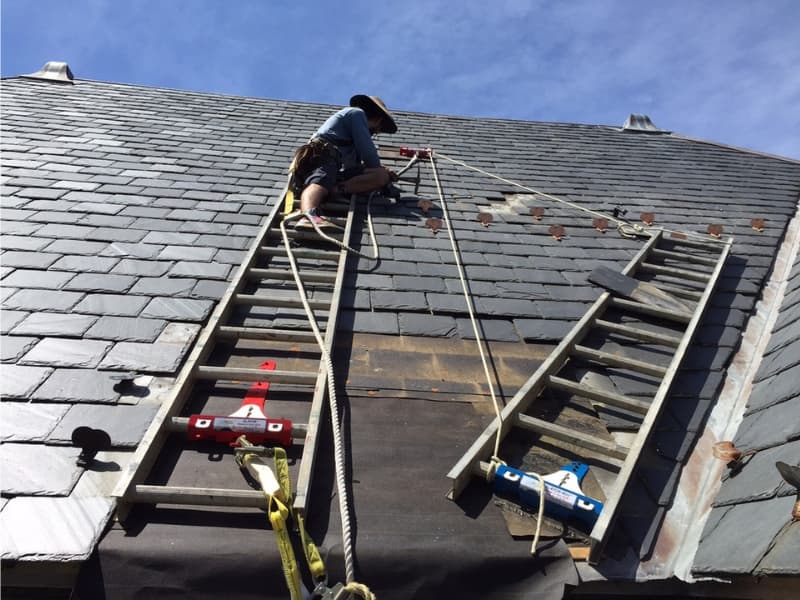
Safety tips for putting a ladder on a sloped roof
Before embarking on the actual methods and tools, you need to be aware of the following safety tips when using a ladder on a sloped roof:
- Ensure the ladder is on a level and stable surface unless it’s secured.
- Use a harness when possible.
- Before going up the ladder, ensure all the locks are engaged.
- Check and avoid electrical power lines.
- Always have someone spot and support the ladder.
- Ensure the ladder is in good condition and can support your weight and any other items you’re carrying.
- If you have a fear of heights, avoid climbing a ladder.
- Always ensure the ladder rungs are horizontal at all times.
- Avoid leaning sideways or backward too much when using a ladder.
These tips apply to when you’re using a ladder on a roof or on the ground such as when you are replacing gutters.
How to put a ladder on a sloped roof
The main tools you can use to use a ladder on a sloped roof safely include the following:
1. PiVit ladder tool
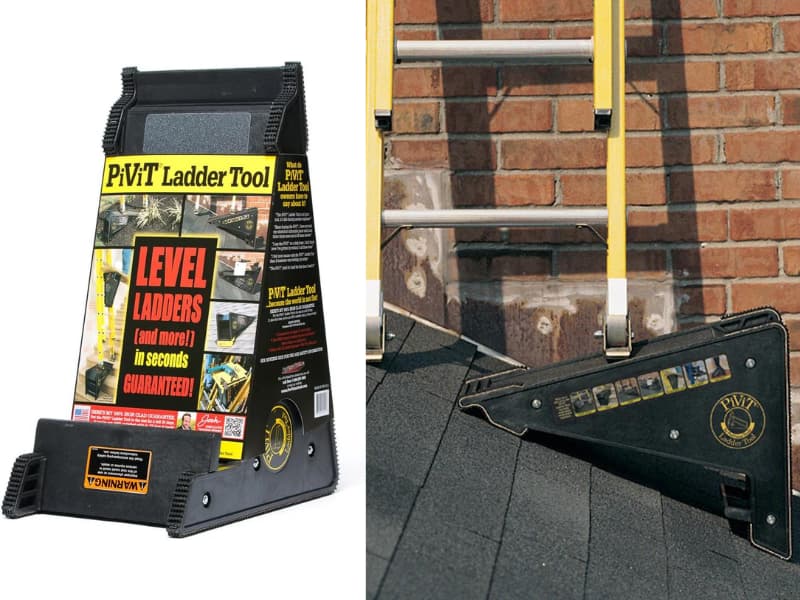
One of the best tools for ladders on sloped roofs is the PiVit tool. It’s a triangular tool with rubber feet that is put on a sloped roof to provide support for one foot of the ladder. The other foot stays on the roof, with the result being a level and safe ladder.
The rubber feet of the PiVit tool provide traction while also protecting the roofing materials. Even with this tool, always have a spotter since it can lose traction and slip. PiVit tools work best with extension ladders.
2. Roof Boot
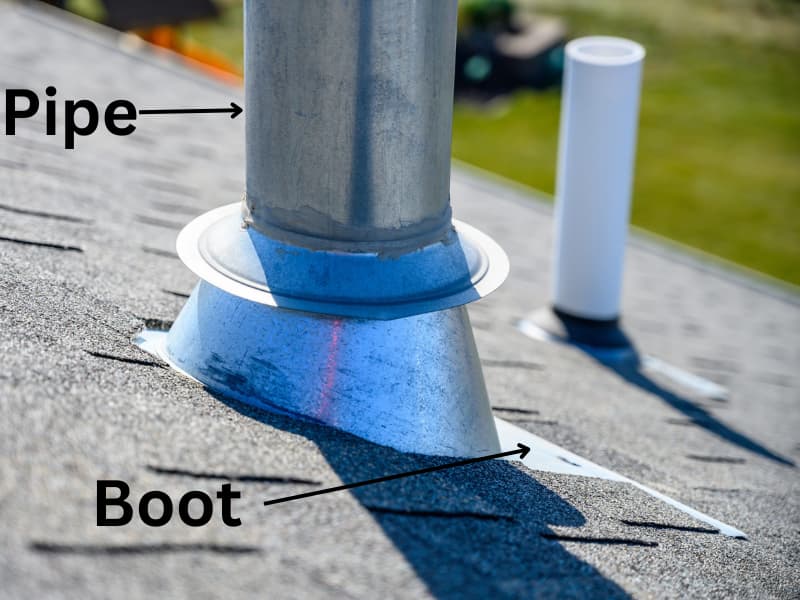
A roof boot is a metal tool drilled into the roof to stop the base of the ladder from sliding off the roof. It’s fixed into the roof with nails or screws and is often used with the PiVit tool to keep the ladder in place.
Since the roof boot is used at the bottom of the ladder, ensure the upper part is also secured since the ladder can easily slide off the roof sideways.
3. Ladder Leveler
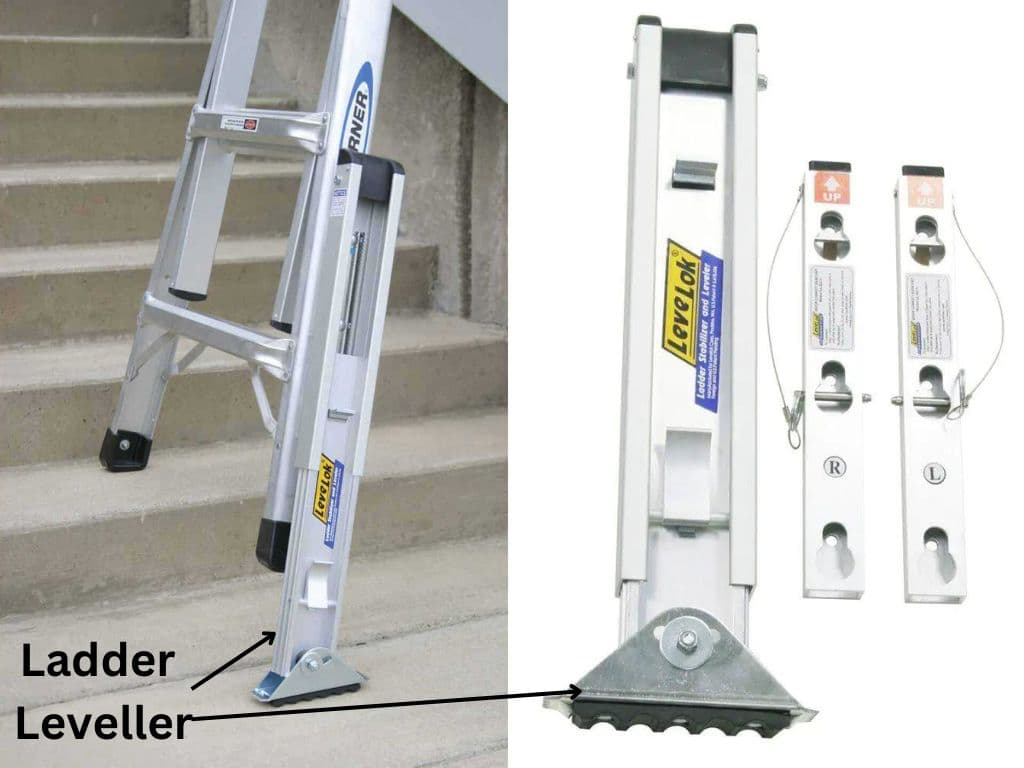
A ladder leveler is attached to one foot of the ladder to raise it to the level of the other foot while keeping it horizontally level. It’s best suited for delicate roofs, such as asphalt roofs which can easily break under stress.
4. Roof Ladder Hook
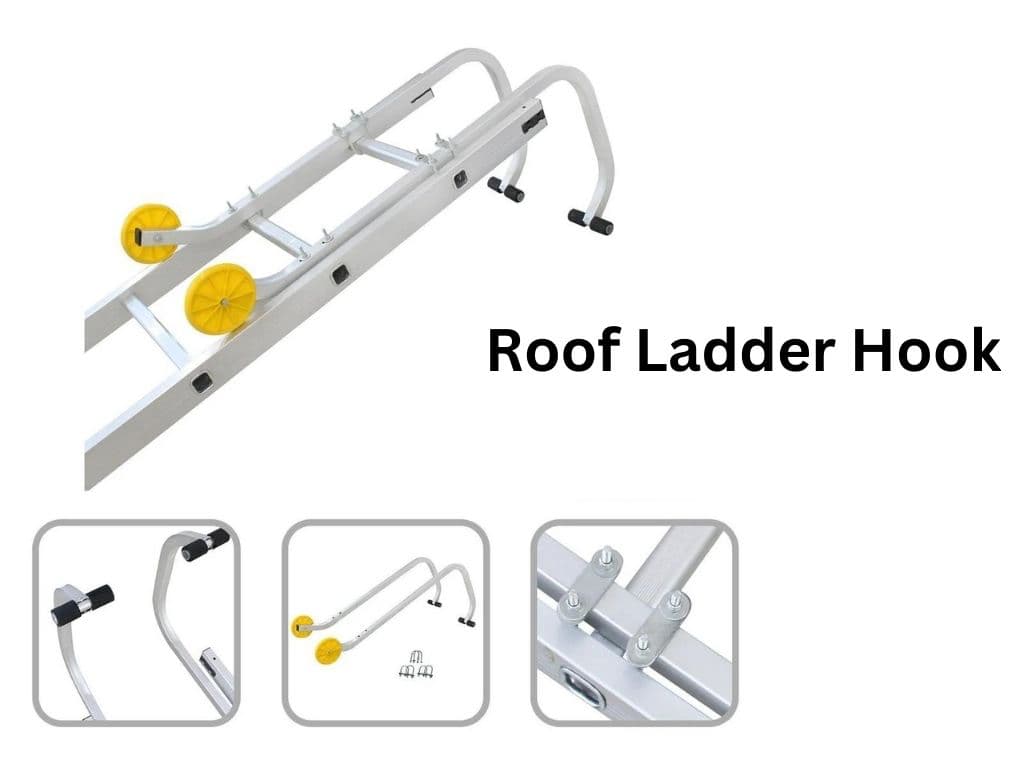
Roof ladder hooks are among the most reliable roof ladder tools as they rarely slip. They’re a single or pair of hooks attached to the topmost rung of the ladder and then hooked to the roof apex. They allow the ladder to lay flat on the roof and hence are also safe for the roofing materials.
5. Ladder Stabilizer
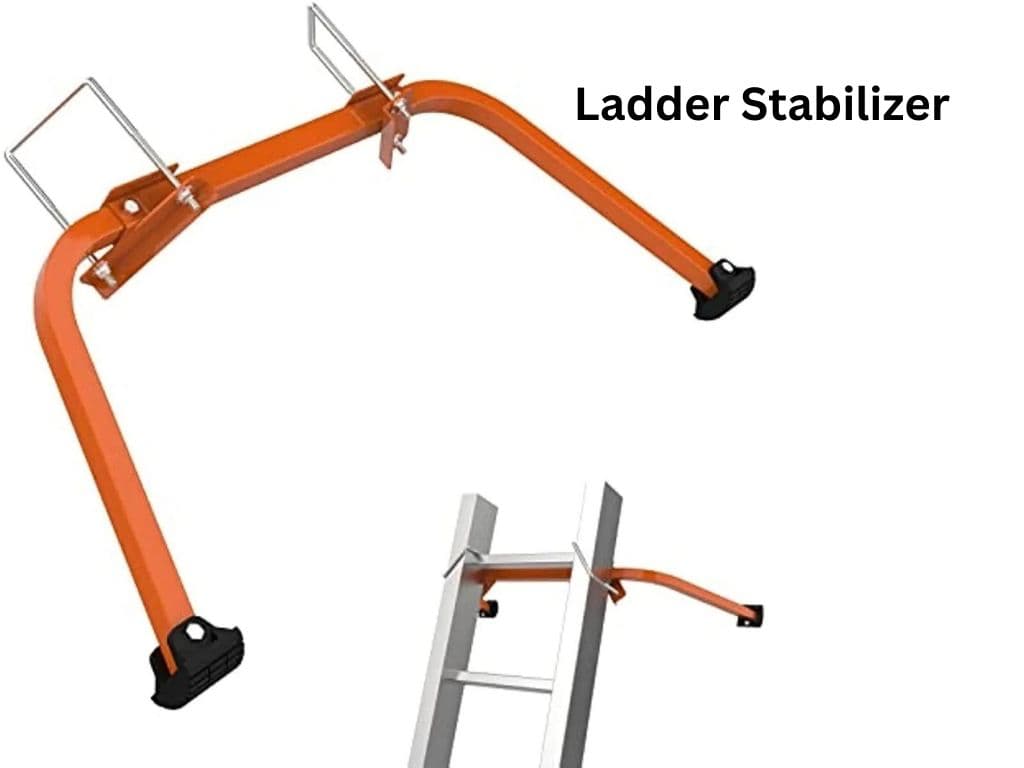
A ladder stabilizer is a tool added to the top part of the ladder that stabilizes it by preventing sideways slipping. For this reason, it works with other tools to keep the ladder steady on the roof.
6. Roof Leash
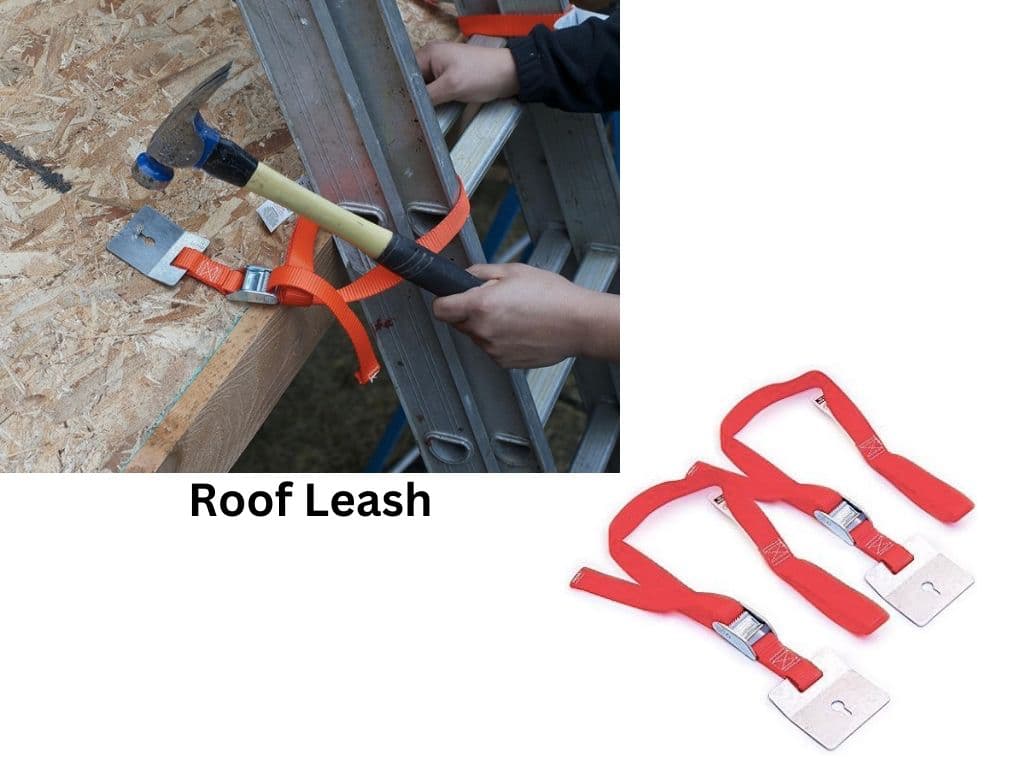
Like a ladder stabilizer, a roof leash keeps the ladder from swinging to the sides and slipping off the roof. It also works with other tools like the PiVit tool to keep the ladder steady and safe on the roof.
Factors to consider when setting a ladder on a sloped roof
Before putting a ladder on a sloped roof, consider the following aspects:
1. The roof’s weight capacity
You will need a professional (if you’re not one yourself) to check the load-bearing capacity of your roof. Ensure the roof can support your weight plus that of the ladder and any tools you’ll be using on it. Also, ensure the weight of the ladder is evenly distributed on the roof.
2. The roof’s slipperiness
If the roof is slippery from the type of roofing materials, snow, or the slope, then you need to take extra care before putting a ladder on it. This is important since disregard to the slope of the roof can lead to the damage of gutters and other parts of the roof when the ladder slips off.
As always, a friend can help support you and the ladder to prevent slipping.
3. Power risks
If the roof is close to electrical power lines or other obstructions, you need to call an expert to handle it. You risk electrocution and fire to the house if you make a wrong step in such a situation.
4. The roofing materials
Check the type of roofing materials to ensure they’ll not break under the weight of the ladder. Shingles and asphalt roofs, for example, require extra care than metal roofs when using a ladder on them. You can easily damage them yet shingles are not cheap to replace or install.
5. The type and size of the ladder
Choose a ladder that’s both lightweight and easy to use. Heavy and cumbersome ladders pose the risk of damaging the roof and slipping or breaking. In such a case, you may end up injured with more roof repairs to do.
Conclusion
With ladders, in general, always check for safety first. If it’s your first time using a ladder or climbing on a roof, you need to be extra careful since there are many risks involved with this activity. Be safe today!
Frequently Asked Questions
Can you put a ladder on a slanted roof?
You can place a ladder on a slanted roof, although you need to use safety tools such as ladder stabilizers and pivit tools to steady the ladder.
How do you stabilize a ladder on a roof?
You can stabilize a ladder on a roof by using something sturdy such as a ladder stabilizer, to keep it in place.
How much weight can a slanted roof hold?
Most residential roofs should hold a live load of 20 pounds per square foot, or 1.9 kPa for a shingled or wooden roof. Stronger materials like metal and clay can hold around 27 pounds per square foot.
